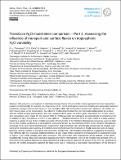| dc.contributor.author | Thompson, R. L. | |
| dc.contributor.author | Patra, P. K. | |
| dc.contributor.author | Ishijima, K. | |
| dc.contributor.author | Saikawa, Eri | |
| dc.contributor.author | Corazza, M. | |
| dc.contributor.author | Karstens, U. | |
| dc.contributor.author | Wilson, C. | |
| dc.contributor.author | Bergamaschi, P. | |
| dc.contributor.author | Dlugokencky, E. | |
| dc.contributor.author | Sweeney, C. | |
| dc.contributor.author | Prinn, Ronald G. | |
| dc.contributor.author | Weiss, R. F. | |
| dc.contributor.author | O'Doherty, Simon | |
| dc.contributor.author | Fraser, P. J. | |
| dc.contributor.author | Steele, L. P. | |
| dc.contributor.author | Krummel, P. B. | |
| dc.contributor.author | Saunois, M. | |
| dc.contributor.author | Chipperfield, M. P. | |
| dc.contributor.author | Bousquet, P. | |
| dc.date.accessioned | 2014-06-23T17:17:08Z | |
| dc.date.available | 2014-06-23T17:17:08Z | |
| dc.date.issued | 2014-04 | |
| dc.identifier.issn | 1680-7324 | |
| dc.identifier.uri | http://hdl.handle.net/1721.1/88067 | |
| dc.description.abstract | We present a comparison of chemistry-transport models (TransCom-N2O) to examine the importance of atmospheric transport and surface fluxes on the variability of N2O mixing ratios in the troposphere. Six different models and two model variants participated in the inter-comparison and simulations were made for the period 2006 to 2009. In addition to N2O, simulations of CFC-12 and SF6 were made by a subset of four of the models to provide information on the models' proficiency in stratosphere–troposphere exchange (STE) and meridional transport, respectively. The same prior emissions were used by all models to restrict differences among models to transport and chemistry alone. Four different N2O flux scenarios totalling between 14 and 17 TgN yr−1 (for 2005) globally were also compared. The modelled N2O mixing ratios were assessed against observations from in situ stations, discrete air sampling networks and aircraft. All models adequately captured the large-scale patterns of N2O and the vertical gradient from the troposphere to the stratosphere and most models also adequately captured the N2O tropospheric growth rate. However, all models underestimated the inter-hemispheric N2O gradient by at least 0.33 parts per billion (ppb), equivalent to 1.5 TgN, which, even after accounting for an overestimate of emissions in the Southern Ocean of circa 1.0 TgN, points to a likely underestimate of the Northern Hemisphere source by up to 0.5 TgN and/or an overestimate of STE in the Northern Hemisphere. Comparison with aircraft data reveal that the models overestimate the amplitude of the N2O seasonal cycle at Hawaii (21° N, 158° W) below circa 6000 m, suggesting an overestimate of the importance of stratosphere to troposphere transport in the lower troposphere at this latitude. In the Northern Hemisphere, most of the models that provided CFC-12 simulations captured the phase of the CFC-12, seasonal cycle, indicating a reasonable representation of the timing of STE. However, for N2O all models simulated a too early minimum by 2 to 3 months owing to errors in the seasonal cycle in the prior soil emissions, which was not adequately represented by the terrestrial biosphere model. In the Southern Hemisphere, most models failed to capture the N2O and CFC-12 seasonality at Cape Grim, Tasmania, and all failed at the South Pole, whereas for SF6, all models could capture the seasonality at all sites, suggesting that there are large errors in modelled vertical transport in high southern latitudes. | en_US |
| dc.language.iso | en_US | |
| dc.publisher | Copernicus GmbH on behalf of the European Geosciences Union | en_US |
| dc.relation.isversionof | http://dx.doi.org/10.5194/acp-14-4349-2014 | en_US |
| dc.rights | Creative Commons Attribution | en_US |
| dc.rights.uri | http://creativecommons.org/licenses/by/3.0/ | en_US |
| dc.source | Copernicus Publications | en_US |
| dc.title | TransCom N[subscript 2]O model inter-comparison – Part 1: Assessing the influence of transport and surface fluxes on tropospheric N[subscript 2]O variability | en_US |
| dc.title.alternative | TransCom N2O model inter-comparison – Part 1: Assessing the influence of transport and surface fluxes on tropospheric N2O variability | en_US |
| dc.type | Article | en_US |
| dc.identifier.citation | Thompson, R. L., P. K. Patra, K. Ishijima, E. Saikawa, M. Corazza, U. Karstens, C. Wilson, et al. “TransCom N2O Model Inter-Comparison – Part 1: Assessing the Influence of Transport and Surface Fluxes on Tropospheric N2O Variability.” Atmospheric Chemistry and Physics 14, no. 8 (April 30, 2014): 4349–4368. | en_US |
| dc.contributor.department | Massachusetts Institute of Technology. Center for Global Change Science | en_US |
| dc.contributor.mitauthor | Prinn, Ronald G. | en_US |
| dc.contributor.mitauthor | Saikawa, Eri | en_US |
| dc.relation.journal | Atmospheric Chemistry and Physics | en_US |
| dc.eprint.version | Final published version | en_US |
| dc.type.uri | http://purl.org/eprint/type/JournalArticle | en_US |
| eprint.status | http://purl.org/eprint/status/PeerReviewed | en_US |
| dspace.orderedauthors | Thompson, R. L.; Patra, P. K.; Ishijima, K.; Saikawa, E.; Corazza, M.; Karstens, U.; Wilson, C.; Bergamaschi, P.; Dlugokencky, E.; Sweeney, C.; Prinn, R. G.; Weiss, R. F.; O'Doherty, S.; Fraser, P. J.; Steele, L. P.; Krummel, P. B.; Saunois, M.; Chipperfield, M.; Bousquet, P. | en_US |
| dc.identifier.orcid | https://orcid.org/0000-0001-5925-3801 | |
| dc.identifier.orcid | https://orcid.org/0000-0003-2233-8945 | |
| mit.license | PUBLISHER_CC | en_US |
| mit.metadata.status | Complete | |
